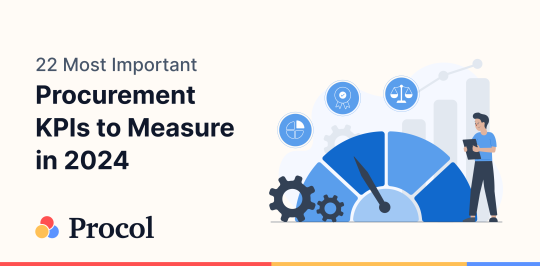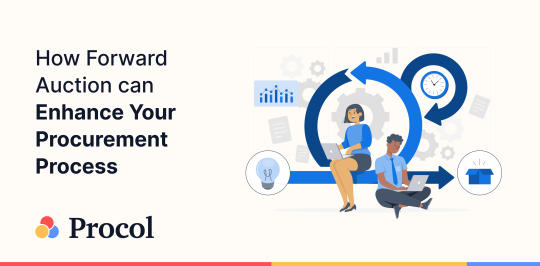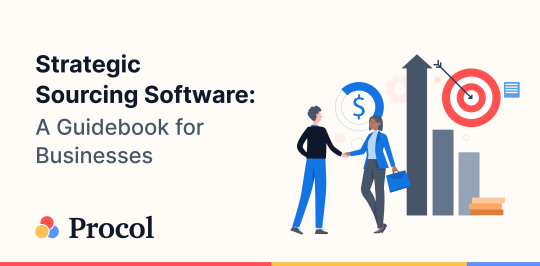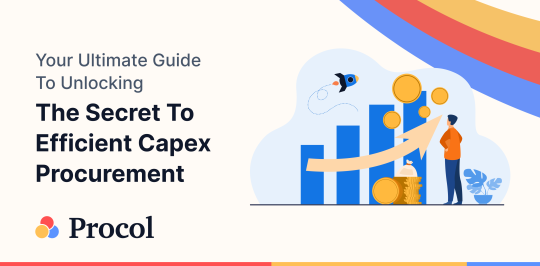Your Ultimate Guide To Unlocking The Secret To Efficient Capex Procurement
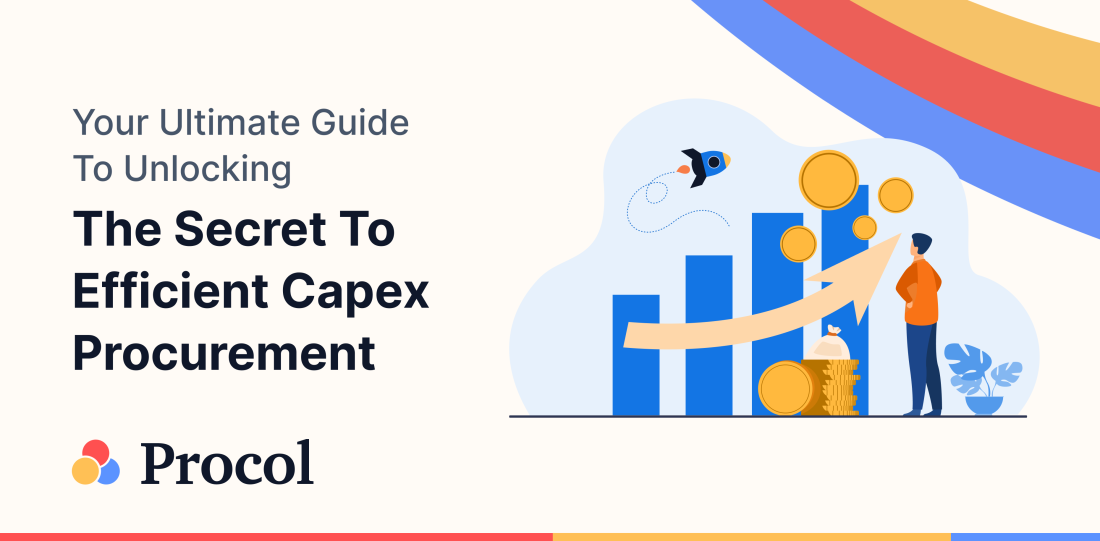
TABLE OF CONTENTS
- Introduction
- What is Capex Procurement?
- Importance of Capex Procurement in Business Productivity
- Types of Capex Procurement
- Benefits of Capex Procurement
- What Are The Challenges That Are Faced By Companies To Manage Capex?
- How can we identify a company’s capital expenditures?
- Steps in Conducting a Capex Procurement Process
- What are effective Capex Procurement Strategy?
- Conclusion
Introduction
If you want your business to pave the way for success, you must analyze the importance of capex procurement. It is an essential element of a successful business strategy. On the other hand, it is a business makeover to boost growth and development.
Any business that wants to succeed has to understand Capex procurement. In layman’s terms, strategic buying of assets, software, machinery, services, etc, is capital expenditure (Capex). All these procurements have to be used to empower you to make informed financial decisions in the long run. For example, the purchased assets may be new ones or parts that improve the productivity of an existing asset. It is more diverse than buying day-to-day goods and services and requires a big picture.
However, companies need to work more strategically when buying equipment. They must work on identifying company needs regardless of heavy purchases.
This blog will discuss everything about capital expenditure procurement, Capex Procurement Strategy, and its significance and will be very helpful for any business that seeks efficiency, growth, and innovation.
What is Capex Procurement?
Capex or capital expenditure refers to the amount a company uses to maintain, procure, or fix fixed assets that it can use in the long term. Meanwhile, Capex procurement means buying suppliers while considering the company’s future strategy. In other words, it means buying the assets and services that will impact the company in the long run.
Capex procurement is divided into two categories: strategic and operational.
-
Strategic Capex procurement: This refers to working on long-term improvements that will help to improve the business’s overall performance.
-
Operational Capex procurement: It works to improve a business’s day-to-day operations.
Capex procurement examples include software, technology, machinery, equipment, and expansion of existing facilities. Expanding on assets will save the company from the expenses that incur spending cash daily on temporary machinery or equipment. Working on capex procurement enhances productivity and expands business in the long run. And for that, future planning is essential!!
Importance of Capex Procurement in Business Productivity
Any enterprise that wants its operations to run smoothly while growing and attaining a competitive edge over other businesses must understand the importance of managing capex procurement.
1. Business Growth & Expansion:
Capex procurement helps companies grab opportunities and stay ahead of competitors by investing in new technology or equipment that can help them increase production and efficiency, which leads to an increase in business revenue.
2. Maintenance & Replacement:
Capital expenditure procurement is crucial for companies when replacing existing assets. Over time, machinery or equipment becomes obsolete or stops working. Investing in buying assets ensures smooth business operations, which prevents costly breakdowns and repairs.
3. Competitive Edge:
CapEx procurement gives companies a competitive edge, enabling them to offer better-quality products or services, enhancing customer service, etc. By investing in assets, companies can differentiate themselves from competitors.
Capital expenditure procurement can also affect the company’s spending decisions. However, with proper strategy, businesses can easily understand which type of investment will yield fruitful results.
Types of Capex Procurement
Capex Procurement is of different types that offer long-term value to a company. Procurement capex includes marketing campaigns, products, technology, and facilities.
Capex procurement aims to improve the company’s overall performance by expanding its reach and increasing its competitiveness. Capex can drive innovation and growth, decrease expenses, and boost profits. In addition, it can help a company attract new customers and employees.
Benefits of Capex Procurement
Capex procurement involves finding the best solutions for the company’s needs and requirements. This will help businesses strengthen the procurement process and enhance overall efficiency. Here are some of the benefits of Capex procurement.
Operational Efficiency:
Upgrading old equipment according to technological advancements will streamline the company’s process, enhancing productivity. With the help of the latest tools, companies can boost efficiency by decreasing the time and resources needed to complete the task. This will further help the organization save money in the future.
Growth and Sustainability:
Capex procurement involves making well-informed investments, such as in energy-efficient equipment. This approach, focused on long-term benefits, this approach is more advantageous than spending on superficial improvements. It paves the way for sustained growth and a secure future. Capex procurement delivers substantial benefits that enhance productivity, open future development doors, and foster sustainability.
Cost Reduction:
When businesses adapt competent solutions, they save money. For example, if a company buys a more expensive software solution than similar alternatives, it may spend more in the long run. Avoiding this helps businesses significantly reduce their overall expenses.
Increased Performance:
When organizations invest in qualified solutions, the team performance is enhanced. As a result, consumers obtain better products and services with fewer delays or issues.
What Are The Challenges That Are Faced By Companies To Manage Capex?
Capital expenditure (Capex) is the top priority for fulfilling company goals. Making capex decisions is difficult as they must be made with the company’s goals and spending size in mind. It has been observed that Capex budgeting and approval policies often need to be described in an organization.
However, the major challenge is implementing the older methods for capex approval, which leads to time-consuming, long processes requiring many seniors’ approvals. Other challenges include capex sourcing, a comprehensive purchasing policy, guidelines on maintaining money retention, and transparency amongst the stakeholders.
Thus, various factors need to be considered during capital investment planning, such as the nature of the project, investment amount, return from investment, long-term organization capex procurement strategy, and other financial concerns. Each capital expenditure is evaluated differently to determine whether it is for growth, regular replacement, maintenance, or increasing efficiency. Different parameters are set based on these criteria.
How can we identify a company’s capital expenditures?
Capex (Capital Expenditure) is a long-term investment made by the company by making informed decisions, considering key objectives, to acquire assets for future business growth. It can be calculated as:
CapEx=ΔPP&E+Current Depreciation
Where:
CapEx=Capital expenditures
ΔPP&E=Change in property, plant, and equipment
Steps in Conducting a Capex Procurement Process
Organizations need help procuring goods and services, such as proper information regarding available options, problems making informed decisions, and prolonged procurement processes. Capex procurement is one method that organizations can use to overcome some of these challenges. It is a comprehensive activity that improves the company’s operations. Check out the step-by-step capex procurement process to implement for efficiency and business operations.
1. Strategic planning:
Capex procurement strategy planning is the first step for companies. It is the cornerstone of efficient operations and informed decision-making. By understanding the market for the best-value equipment and evaluating their current status. Understanding your company’s requirements is key to its performance and functionality in the business environment.
2. Financial Assessment:
Companies use the required funds to avoid overspending on unnecessary purchases. Maverick spending is out-of-the-blue spending that ends up eating up the company budget, so it becomes essential to look for budget constraints and assess what’s available in the company’s resources to meet goals objectively and financially.
3. Evaluation of Vendor:
For capex sourcing, companies look for potential vendors in the market that offer quality products with timely delivery while considering all the fundamental laws and standards. Moreover, it means looking for vendors that match the company’s expected budget.
4. Decision-Making:
After finding the right vendor in the evaluation phase, rigorous decision-making is crucial to gathering the company’s decision-makers. They will further work on assessing the vendors in terms of reliability, quality, and long-term benefits to finalize vendors.
5. Implementation:
This phase involves finalizing and executing the purchases. If a company includes new equipment in its operations, it is crucial to look for any uncertainties and adjudicate them, as they impact company performance and competitiveness.
What are effective Capex Procurement Strategy?
One of the biggest challenges when the procurement team is managing the capital expenditure (Capex). With increased pressure to deliver research and limited or not updated resources, Capex management can be daunting. However, implementing effective capex management strategies makes it easier to reduce Capex costs without compromising quality.
Check out the Capex Procurement Strategy listed below:
To manage your business capex, companies must understand their business goals and look for areas where investment is required to achieve them. To do so, you can begin by analyzing your budget from last year and which capex procurement offers a high ROI.
Moreover, it would help to consider internal factors, such as projects requiring extra resources in the future, and external factors, such as economic trends and regulatory changes. Once you have identified the key factors, you must develop strategies to maximize ROI. Thus, procurement managers must deliver value by reducing wasteful expenditures.
The organization needs to get buy-in from stakeholders. In big companies, there are review meetings to review the investment plan. It is an opportunity for the procurement department to provide details about the ongoing and upcoming investments. Companies must ensure that stakeholders understand the issue and the solution clearly to get stakeholder support. Thus, always keep them in the loop to continuously work toward success together.
To develop a plan, businesses must first identify areas where cost-cutting can be done without compromising efficiency and quality. To do so, you must undergo an analysis of underlying procurement processes and look for negligence.
One way to do this is to thoroughly analyze your procurement processes and identify any inefficiency or unnecessary work, such as negotiating better prices with vendors or enforcing new technologies to perform certain tasks.
Ultimately, devising an effective plan for decreasing Capex expenditures demands meticulous planning and cooperation across multiple departments within the organization. Thus, if departments work together towards common goals and constantly monitor progress over time, they can ensure that they minimize unnecessary expenses.
One capex procurement strategy is to contact vendors and request a meeting to discuss cost-cutting methods. Business representatives must present themselves with data on current spending and areas for improvement and negotiate better pricing or payment terms accordingly. Vendors will agree to offer discounts if bulk purchasing of goods or services occurs over time.
Another option is to look for alternative suppliers who offer similar products or services at lower costs without sacrificing quality.
Thus, by working together, both the company and vendors can benefit from improved efficiencies and reduced expenses. Building solid relationships with vendors is always recommended, and vigorously optimizing procurement processes can help drive down Capex expenditures while keeping high-quality standards in your business operations.
Technology plays a significant role in capex management. Organizations can look for capex procurement software that helps track the company’s financials. With the help of software, a company can look for real-time spending patterns, which further help them identify key specific areas. Tools like data analytics also help in capex management as they help businesses make informed decisions about future investments. Thus, companies can easily make informed decisions about allocating their resources by understanding the ROI on the last capital expenditures.
Conclusion
Capex procurement means buying long-term resources to benefit the company’s efficiency and overall performance. It is a strategic investment that lets companies grow in the future by recognizing new technologies. Moreover, keeping employees from maintaining slow technologies for the current standards enhances efficiency. Capex procurement is all about upgrading the company’s operations and putting new things on the table.
Additionally, Capex procurement helps reduce risk, optimize value for companies, and smooth processes. By understanding capex procurement’s importance and strategy, it will be easier to make better decisions when executing projects.
Get a Free Demo
We'd love to hear from you. Please fill out this form to schedule a demo with us. You can also give a call on +91 76666 82222

